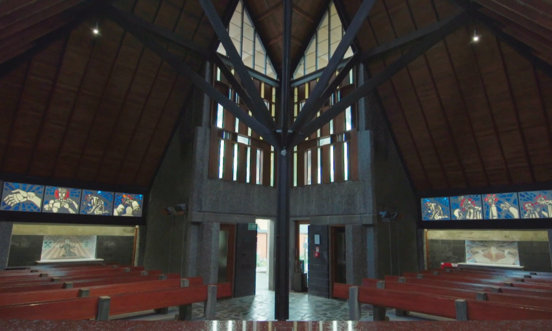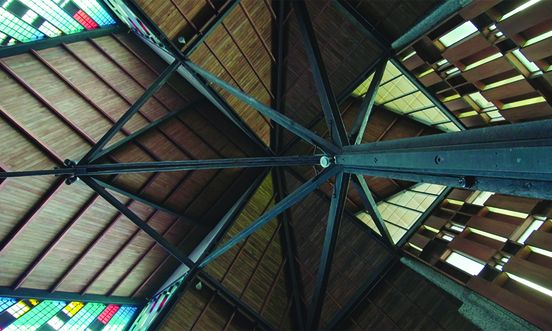-
Author
Jade Kake -
Date
29 Apr 2021
Essay
The Single Object: What John Scott taught me about architecture
John Scott broke barriers for Māori architecture – and paved the way for future generations of Māori architects like Jade Kake.
Sometimes I get asked the question: what is Māori architecture? What is Māori, exactly, about the buildings Māori architects design – especially in the absence of koru and kowhaiwhai, whakairo and tukutuku? Ornamentation can be a significant element of Māori architecture, but in my mind, this is superficial if it’s the only thing that is Māori about the building. Maybe this is the point made by Modernism.
I think of architecture as whakapapa, connecting people and places across space and time. I think of architecture as behaviour setting – a place for cultural practices and interactions and relationships underpinned by tikanga to occur. Sometimes the most Māori aspect of a building is the floor plan, especially in the arrangement of spaces that accommodate the way we want to live our lives and use and occupy space as Māori.
Māori architecture involves listening closely to people and land. It’s the synthesis of culture, history and aspirations, a deep knowledge and understanding of people of place. It’s in the relationships that we nurture in the process. Finally, it is Māori architecture because we are Māori.
When I think of John Scott, I think of a tūāpapa, a foundation. As Dr Deidre Brown (Ngāpuhi, Ngāti Kahu) says, Scott broke barriers for Māori architecture and architects at a time when Māori architecture had been suppressed – including through legislation that banned the construction of raupō whare, and the Tohunga Suppression Act, which banned the transfer of Māori knowledge, particularly around things that were tapu. Scott was practising during the post-war era when Māori culture and identity were discouraged and assimilation was the norm. Māori architecture and visual expression more generally had very little status or visibility in the mainstream.
I entered architecture school in 2006, and it wasn’t until near the end of my degree that I learned there were Māori architects. I had previously understood it as a very white profession, with Indigenous architecture relegated to the domain of (inevitably white) anthropologists. Now, as a young (arguably approaching mid-career) practitioner, I’m grateful for the foundation that has been laid by John Scott and other early Māori architects, paving the way for those of us who have followed. It’s not lost on me that we are able to practice architecture openly, as Māori – something which was largely denied to earlier generations. Notwithstanding the ongoing challenges, it’s an immense privilege to be able to have our own whānua and hapū as clients and to have our culture respected and represented in the design of public buildings and spaces.
I had a formal, very conventional architectural education. Modernism, the way it was taught when I was a student, seemed incompatible with Indigenous ways of thinking and being. Modernism rejected ornamentation, and seemed diametrically opposed to so-called “vernacular” architecture, which is what Māori and Indigenous architecture was still largely classified as at that time. It was a revelation to me to discover Māori modernists – including John Scott and Rewi Thompson – because it challenged the fundamental precepts of modernism as I understood them at the time. It was through exposure to Māori modernists like John Scott that I grew to understand that modernism is not necessarily incompatible with our cultural practices and belief systems as Māori.
Form follows function can also be applied to tikanga, with the form of our spaces following and enabling cultural protocols to occur. Visual expression of the structure is an inherent aspect of Māori architecture, which can be evidenced in newer projects such Te Noho Kotahitanga marae (carved by Lyonel Grant – Te Arawa), which utilises traditional construction techniques which mean the carved elements are structural (rather than applied). Modernism also embraces the use of new materials produced by industrial processes that created new possibilities. Contemporaneously, Māori designers are at the forefront of utilising industrial processes to create new approaches to traditional concepts. This includes John Scott’s son, designer Jacob Scott (Ngāti Kahungunu) and his use of CNC technology to generate contemporary whakairo, and architect Derek Kawiti’s (Ngāti Hine, Tūhoe) use of 3D printing and other digital fabrication technologies to produce sculptural work and building-integrated elements.
When I think of the impact John Scott has had on modernism, and the emergence of Māori modernism and contemporary Māori architecture more generally, I think about the essential elements that have been transposed and reinterpreted within contemporary spaces. Elements like the pou.
A pou is an element that creates the space between Ranginui and Papatūānuku, between earth and sky. The pou is embodied in the rākau, whether it’s anchored in the ground or milled for timber. More than a column, a pou is an anchor, the centre, the heart of the building.
In my architectural education, piloti – reinforced, ground level supporting columns – featured heavily. Architects and students of architecture will no doubt be intimately familiar with the Villa Savoye in Poissy, France, designed by Le Corbusier. Piloti were significant as progress in industrial processes meant that for the first time, slender, reinforced load-bearing columns were possible. A piloti creates space, enabling open floor plans and a ‘free’ facade, the non-load bearing wall permitting more freedom in openings.
A pou also creates space around it, but in a different way. Holding up the roof, the sky, pou creates space that radiates out from the centre. Piloti recede, but pou radiate. Futuna Chapel, that iconic building by John Scott, is centred around a pou tokomanawa. The interior of the space reminds me of Rangiātea Church in Ōtaki, built more than a hundred years prior, a series of pou that hold up the sky. In Futuna, the pou is at the centre: the radiating struts branch out like a tree, filling the space and supporting the canopy, the interlocking gables of the roof. Jacob Scott said that as a column can be a pou, a person can also be a pou. John Scott’s legacy is in the way he has created not only spaces, but space for future generations, a tall kauri creating the light in which we are able to exist and flourish.
This content was created in partnership with The Spinoff.
--
Jade Kake (Ngāpuhi, Te Arawa, Whakatōhea) is an architectural designer, writer and housing advocate living and working in Whangārei. Her design practice is focussed on working with Māori organisations on marae, papakāinga and civic projects, and in working with mana whenua groups to express cultural values and narratives through urban design.

The pou in Futuna Chapel. Image: The Single Object

John Scott's Futuna Chapel in Wellington. Image: The Single Object